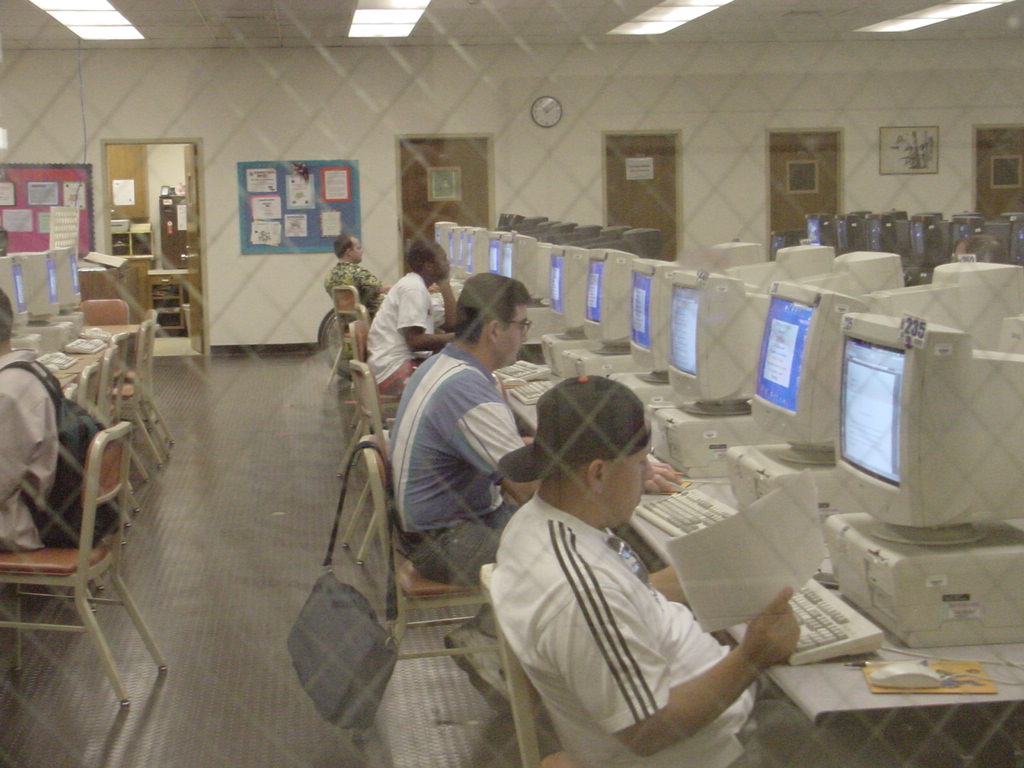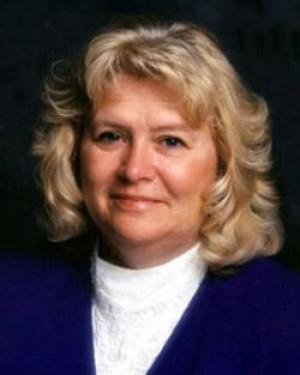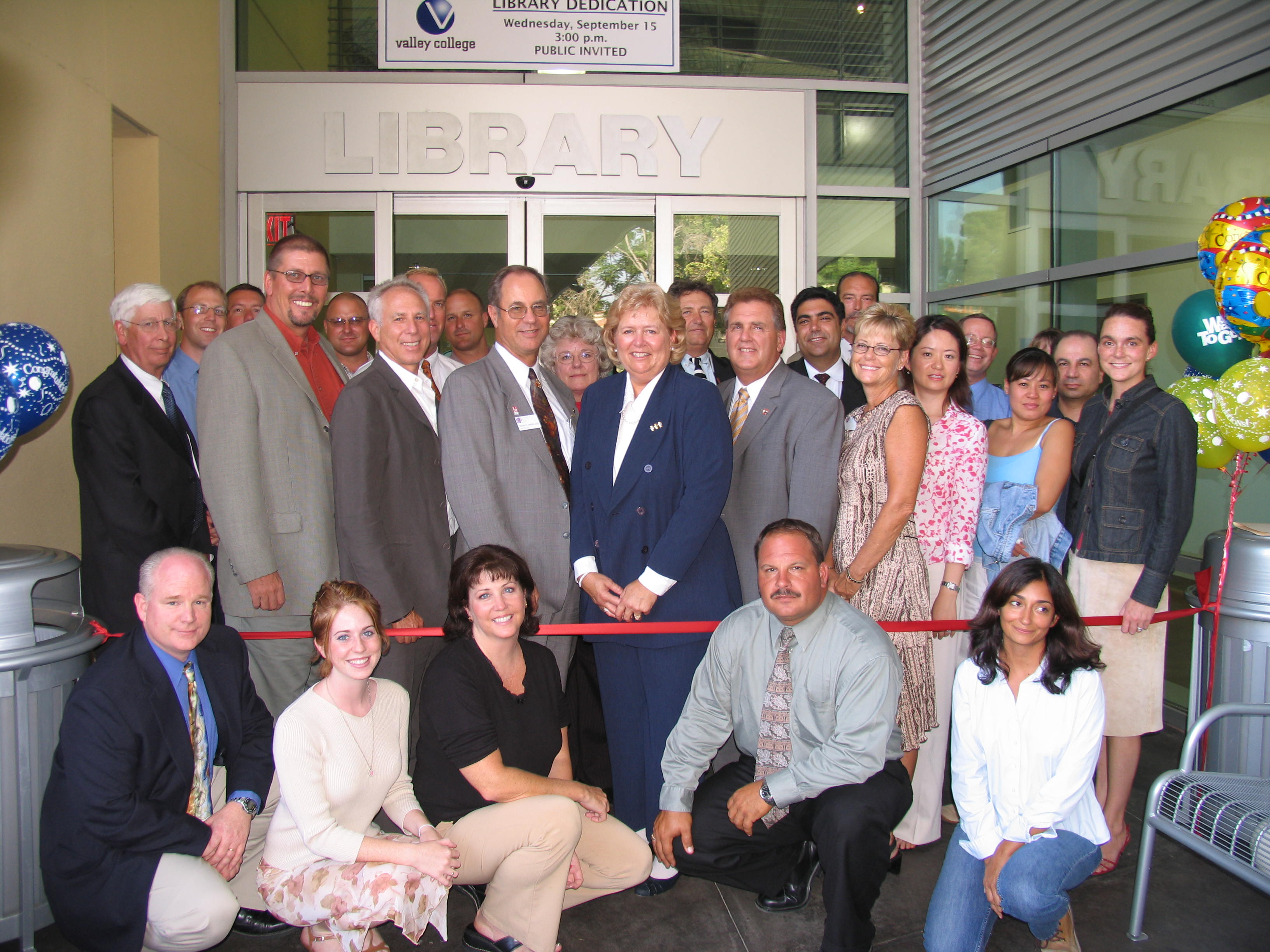2002-2007
The Harris Interim Presidency, 2002-2003
After Caballero’s departure, Dr. Tom K. Harris was appointed interim president for the 2002-2003 school year. Harris was the chancellor of the North Orange County Community College District and past president of Merced College.
During Harris’s tenure, programs started under Caballero’s presidency were continued, most notably, construction of new earthquake-safe buildings, with demolition and reinforcement of older buildings. In fall 2002, voters passed Measure P, a $190 million bond to upgrade facilities in the district, with funds going to the project.
The campus also continued transitioning digitally. To the great benefit of students, the SBVC Foundation scholarship application process went online, making applications and awards easier to administer. From campus to the community, KVCR raised money and received a grant toward funding to convert to digital technology and to construct a new antenna.

Continuing a tradition of activism, Associate Students sponsored a bus trip to the State Capitol to join a rally to oppose Governor Davis’s proposed budget, which included taking $1.08 billion from community colleges and hiking tuition from $11 to unit to $24 per unit.
President Whittaker and the Millenium Refresh, 2003-2007
Denise Whittaker became the 11th permanent president of San Bernardino Valley College in July 2003. With the transition of presidents came the transition of the campus, with forward-looking plans. In the midst of campus reconstruction, President Whittaker undertook an associated project: development of Valley’s first coherent, collegewide strategic plan. Whittaker reconstituted the College Council with representatives from management, faculty, classified staff, and students to work on the strategic plan. The council set goals for campus culture and climate, academic excellence, technology, facilities and campus environment, and community relations. The 15-year strategic plan was completed in 2004.
The look of the Valley campus changed radically over the years of Whittaker’s presidency, not only because of the constant state of construction but because of the style of the new buildings. The Library was the first of the new buildings to be dedicated, in September 2004, with the Health and Life Sciences building and the Administration/Student Services buildings opening the following year. The Campus Center, Arts Building & Gallery, Child Development Center, and Student Health Services were all completed in 2006.


There was vocal opposition to the style of the new buildings--dubbed the Millennium Look--because it was so different from the mission style of the old buildings that gave the campus an iconic, California look. However, the Auditorium, the jewel of the campus, was also renovated during this time and remains a symbol of Valley’s original architecture. The student theatre production of To Kill a Mockingbird opened the Auditorium with its completely renovated interior.
External changes were paired with technological progress. Financial Aid instituted new software to streamline the student loan process. Online and hybrid classes continued, and enrollment was enhanced with the new eSchedule appearing on the Valley website, allowing academic planning and quicker registration.
During the Whittaker presidency, the faculty developed Student Learning Outcomes and Core Competencies to provide clearer benchmarks for student learning and success. In support of newly articulated course goals, CurricuNet, an online curriculum management system, was implemented for course and program development.
The Child Development Center, which provides child care and preschool, received a 3-year renewable grant for its Parent Education Center, which offers support services for parents, foster parents, relatives, caregivers, students, and community members. Furthermore, the SBVC preschool program benefited from almost $1 million in state funds. After the new building opened, students developed a garden and butterfly pavilion for the children in the Child Development Center to enjoy.

Whittaker’s planning extended to ensuring student success after SBVC. Whittaker and CSUSB President Albert Karnig signed a dual-admissions agreement between the two campuses to raise transfer and completion rates for Valley students who transfer to CSUSB. Furthermore, SBVC’s Transportation Center entered a partnership with Workhorse Custom Chassis to train industry employees, but SBVC students benefited from access to RV technology and equipment. The San Bernardino County Workforce Investment Board committed $100,000 for an advanced manufacturing training program for manufacturing employees at Valley and Chaffey College.
Students continued to engage in important political and social activity during Whittaker’s presidency. Valley students joined 9,000 others in Sacramento to protest Gov. Schwarzenegger's proposal to raise student fees by 44%. MEChA held a day-long rally to support the Great American Boycott, a national protest against proposed federal immigration legislation. Associated Students held a Rock the Vote event on campus during which several hundred people registered to vote. Through numerous activities and donations, in partnership with the Associated Student Body, the college donated over $10,000 to aid those affected by Hurricane Katrina and provided numerous goods and services to those affected by the Old Fire, including shelter, cleanup, clothes, and household items.

September 2006 brought festivities for Valley’s 80th anniversary. Whittaker started the celebration in the new Campus Center with state representatives. Herb Fischer, county superintendent of schools, presented SBVC with a certificate of excellence. When Valley first opened in 1926, there were 140 students; 80 years later, there were nearly 12,000 students seeking higher education.
Whittaker left the campus with new traditions, such as the gift basket raffle at the annual holiday party, a fundraiser that benefits textbook scholarships for students. Whittaker worked to improve the college’s relationship with local schools to improve educational opportunities for students throughout the community. She left the college with a 25-year plan for new construction, as well as with new mission, vision, and values statements.

